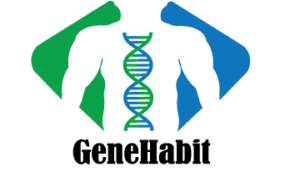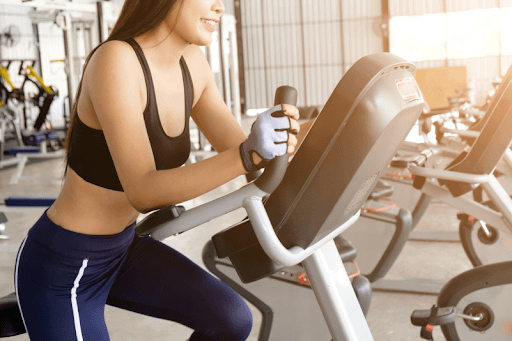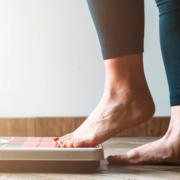DNA Testing: Your Companion For Optimal Body Weight And Fitness
Losing weight is hard work! You’re going to have to put in the time and effort if you want to achieve your weight loss goals. But before you start, you must know your obesity predisposition because weight loss programs are not effective for everyone. Although intense dieting and exercise can shed a significant number of pounds, individuals who have a genetic predisposition to obesity may not be able to lose weight with the usual forms of exercise. Even if they lose weight, they are less likely to maintain the weight loss, and they are more likely to gain it all back and more.
To maintain optimal body weight and fitness level, it is important to choose a workout as per your genetic makeup.
Programmed weight loss exercise has the following aspects:
- Optimal Exercise type for weight loss (endurance or power or a mix)
- VO2 max (Aerobic Capabilities)
- Injury Risk
- Recovery
1. Choosing your right workout 
Have you noticed that some individuals respond to the exercise and workout plan effortlessly, while others struggle for months at the gym and do not see any results?
Research has shown that every person responds differently to varying types of exercise. Understanding your genetic profile can help you personalize your workout routine to best reach your fitness goals.
It helps to know if you are genetically suited to power or endurance exercise.
Things to consider:
- Low-Intensity Steady State training is a method of improving endurance by exercising for long periods at low intensities. For example, if your goal is a 5k race, try running 10k at a slower pace to build endurance.
2. Impacts of genes on your exercise 
Your genes can affect your performance in both power and endurance exercises.
Scientists have recently discovered the ACTN3 gene variation has a direct effect on endurance and power performance for an individual by affecting the production of alpha-actinin-3, a protein found in fast-twitch muscle fibers. Variation in this gene decodes whether you are more suited to power or endurance exercise.
Knowing your ACTN3 genotype, through a DNA test- you can optimize your workout to push your body just the right amount and avoid over-training. You can also focus on high-earning sporting events where your genetics give you an advantage.
3. Understanding your Aerobic capabilities

VO2max is the measurement of the body’s ability to consume and use oxygen during exercise. The higher VO2max, the more oxygen your body can consume. This attribute is crucial when examining aerobic fitness. A runner with a high VO2max can breathe in more air and run faster and farther than a low VO2max runner.
Studies suggest that individuals’ VO2max is more strongly affected by their genes because numerous different physiological and biochemical variables are involved in endurance exercises. Individuals’ genes can affect each of these variables.
For example, in a study scientists found ACE and ADRB3 genes impact cardiorespiratory endurance by regulating and adapting the cardiovascular system, clearing lactate, controlling mitochondrial function, and more. Individuals with positive versions of these genes showed prolonged endurance and durability. Hence can indulge themselves in power and endurance or a mix of both workouts.
With genetic testing, one can gain insights into how your genes impact your aerobic potential; and know how well you utilize oxygen during exercise. This will help you to understand your fitness threshold and help to program your workouts for enhanced results.
Things to consider:
To be able to run faster or longer, you will need to develop a high level of fitness. The best way to do this is by using both aerobic training and lactate threshold training.
4. Knowing your injury risk 
For many individuals, injuries seem to occur more frequently compared to others. There are many factors to injury risk such as wrong training or performing work out without a fitness guide. But most importantly your genes contribute a lot towards your injury propensity, as proven by several scientific studies.
For example, certain genetic variations in the COL1A1 gene can make some individuals more predisposed to tendon and ligament-based sporting injuries (Achilles Heel and ACL rupture). Individuals who have these variations tend to have weaker collagen. Therefore more likely to experience ruptures, tears, and strains than individuals without these gene variations.
DNA testing will enable you to gain access to your injury risks and help you and your trainer to personalize your workout to avoid injuries and achieve significant fitness results.
Things to consider:
- Strength training can protect you from injury by increasing your bone density and strengthening your muscles. It provides more support for your joints.
- Bouncing and rebounding can decrease injury risks and also improves soft tissue
- Eccentric training is an effective way to strengthen ligaments and tendons. Eccentric training involves lengthening a muscle under load, for example- lowering a weight in a slow controlled manner.
5. Knowing your Recovery efficacy 
You must have noticed that some individuals recover and are ready to go again after little rest after doing a set of workouts. While others need a longer break between hard in between training regimes. Research has shown that some gene variations make it difficult for an individual to recover from hard training; these individuals should be mindful of their training and nutrition.
As per scientific studies, genetic variations in genes such as ACTN3, IL6, and AMPD1 impact muscle contractions, thus individuals with a negative gene variation of these genes can induce fatigue and may take time to recover.
With DNA testing understanding the recovery efficiency would help you achieve significant improvement. It helps your trainer to understand your fitness threshold.
Things to Consider:
- If you have a low recovery efficiency result, you should be resting for at least 48-72 hours after strenuous workouts.
- Inflammation is essential for healing from injury and fighting off illness. Omega-3 is a vital nutrient to help your body fight inflammation.
- After a hard workout, it’s important to cool down to avoid muscle soreness or injury. Once you cool down, you can do anything from walking or running to cycling. A cool-down session of 5–15 minutes can enhance your recovery and avoid injuries.
- Impact of genetic testing on overall fitness aspects
- DNA testing helps you identify your optimal exercise type, aerobic capacity, and injury risk to achieve your desired fitness level.
Impact of genetic testing in overall fitness aspects
DNA testing helps you to identify your optimal exercise type, aerobic capacity, and injury risk to achieve desired fitness level.

With DNA tests work smarter not harder.
- Lose weight faster with the optimal type of exercise.
- To improve performance or achieve an ideal fitness level, understanding your genetics will enable you to achieve optimal results in the shortest time.
- Whether you are a weekend warrior looking for a competitive edge or an athlete wanting to maximize his or her performance, the DNA test gives you the necessary tools to elevate your fitness.
- Identify fitness enhancing diet and nutrients.
- Impact of stress and sleep on your physical performance outcomes
GeneFIT DNA Tests: Unlock your potential to achieve optimal fitness
With GeneFIT we combine your unique DNA profile with lifestyle and environmental factors to identify the specific actions you should follow. So whether you’re looking to lose weight, build muscle, get fitter or live healthier, eliminate the guesswork and cut straight to what works for you.
With GeneFIT you can discover:
- Whether your muscles are equipped to work with explosive power workouts
- Whether you have a sedentary lifestyle predisposition or low exercise motivation feelings.
- Whether you are better suited to endurance sports or exercise.
- Your baseline levels of aerobic stamina are also known as VO2max.
- Your injury risk
- Your stress and sleep management.
For more details click here or connect with our experts
FitLife DNA test gives you a complete report about your fitness. And a detailed insight about the optimal type of exercise, aerobic capacity, and injury risk for you. Achieve your desired fitness through genetic insights in your DNA that can transform your fitness routine and training for optimal fitness. Click here to read more about the FitLife test or connect with our experts














Leave a Reply
Want to join the discussion?Feel free to contribute!